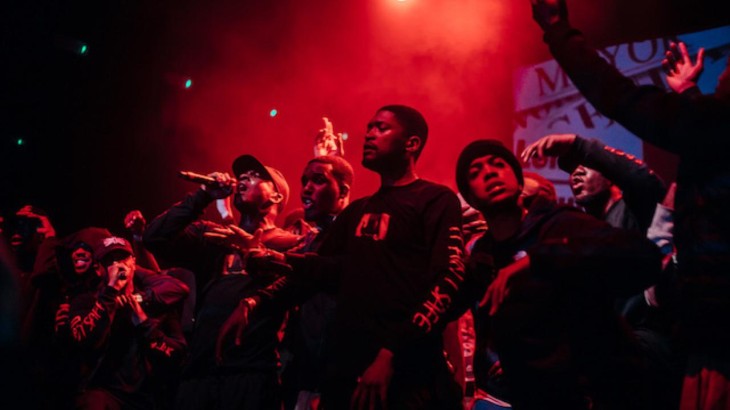Born in the bedrooms of British estates, Grime is one of the most vibrant and powerful cultures, capturing the ideals of London’s youth with the world left in awe. Where 80s New York had hip-hop to represent them, the portrayal of life in their city, early 2000 London remained in a limbo in-between the shadow of the punk takeover and the UK dance sounds which emerged.
The answer wasn’t flashy, it was gritty and rough; grimy, even, a reflection of real life. Blending home-grown sounds of garage and jungle, it was illegal pirate radio stations based in kitchens which inevitably cultivated a booming culture. London’s answer to hip-hop, it gave a voice to the voiceless within the fast paced, digital world of 21st century Britain.
From the streets to the award show stage, there’s definitely been a huge change in the past few years alone. A major turning point was when pioneer Dizzee Rascal was awarded the coveted Mercury Music Price back in the year 2003, but it’s taken another 13 years for grime to be once again be praised at the award show.
In the past two years alone grime has grown from essentially a small group of friends to a global phenomena. Just this month, North London’s Skepta took home the coveted Mercury Prize, beating David Bowie and Radiohead with his album Konnichiwa. But what actually sparked the grime explosion? Why has it taken 16 years to reach the worldwide spotlight and why now?
If we look back to the early 2000s, we find early pioneers like Dizzee Rascal, Kano, Wiley, D Double E. There was a point where many reached out to American sounds, compromising their unique identity to adopt a more traditional hip-hop voice. The result was the mainstream Dance Wiv Me rapping Dizzee, the Wearing My Rolex Wiley, and even the Amnesia Skepta. It didn’t stand out because, well, it didn’t stand out. It didn’t feel original and it lacked a key theme for these artists, integrity.
“I’ve been keeping my ear to the streets, The UK run out of ideas, Everybody doing covers of American beats,” Skepta acknowledged in his single Ace Hood Flow the following year, a theme which many seemed to suddenly pick up on and acknowledge in the scene. In response, artists’ decided to journey back to the original sounds, the vibes that they had begun with, a change which resulted in Skepta’s first global grime breakout That’s Not Me, capitalising on the original ‘eskimo’ sounds.
From here many more followed, including another leader of the grime trend Stormzy, who found his break with a freestyle over the Functions On The Low instrumental, a tune originally released back in 2004. These days it comes easier, with new artists Santan Dave and AJ Tracey blowing up with their single Thiago Silva, a booming remix of the 2003 Pied Piper instrumental.
The decision to return to the genre’s roots and build upon their past rather than jump on a foreign sound cultivated something truly original and important, something that authentic and entirely British. During a time when mainstream rap was stretching out in countless directions thanks to a growing boredom among listeners, grime endeavoured.
Now, as listeners and outsiders to the culture, we’re standing at a real turning point. Beyoncé is dancing to Skepta onstage, Drake is a part of Boy Better Know. It’s not even close to the underground anymore.
So what does that mean for the future? Already the term grime is becoming broader and broader, reaching out to different sounds and vibes, but staying unexplainably grimey. It’s hard to predict what such a new form of expression will do next, but already we are seeing this trend of nostalgia, and the legendary Jammer agrees, “You’re always gonna get people recreating what’s been done before if it was great,” the BBK member and Lord of The Mics founder explained, “Moving forward, someone’s gonna come along and add their thing which is new, mix it with something old, and that’s fusion, out of a magical thing something else is gonna come.”
The one problem with a genre that champions such specific sounds and rhythms is that it has its limits, it’s boundaries. That said, there’s marked diversity with many artists, be it Novelist‘s experimental beats, J Hus’ addictive dancehall blend, or Section Boyz’ trappy inflections, so it’ll be interesting to see where grime will shake and shift to in the coming months and years. Will it prevail when it’s no longer the new kid on the block?
Image: Noisey

